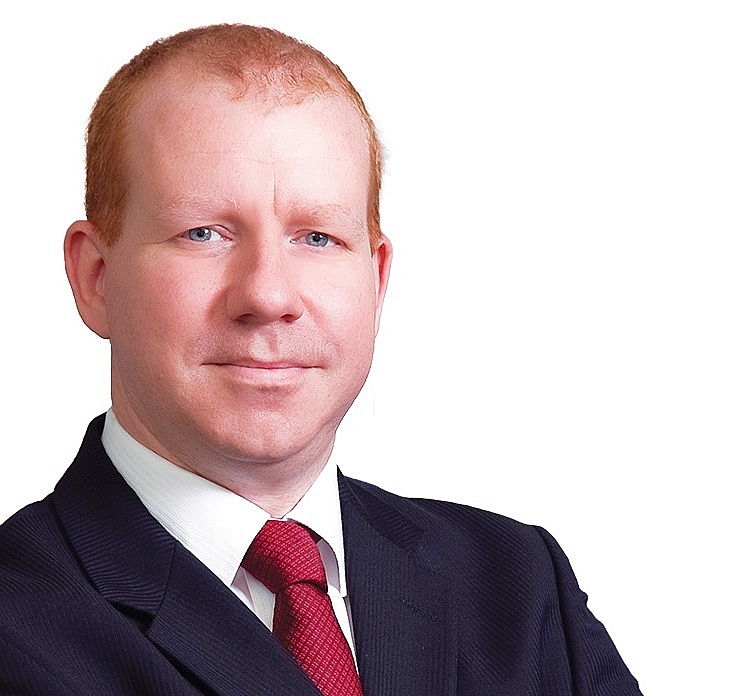Avoiding “creative destruction” to stave off future recessions
 |
| Steve Brice, chief investment strategist at Standard Chartered Bank |
We believe the three- to six-month outlook for global equities, credit, and other income-generating assets looks favourable. This is based on our view that global growth prospects are stabilising after a period of downgrades, event risks are declining, and the US Federal Reserve has injected significant dollar liquidity into the global financial system.
However, there is always a nagging concern that this rally might be curtailed. In part, this concern is fuelled by the last item on our list of short-term positives i.e. the Fed stimulus and the inherent risk of a policy mistake.
Given this, it is worth remembering what led us to the global financial crisis. In my opinion, the foundations were cast by two key factors.
First, former Fed chair Alan Greenspan failed to hike interest rates quickly enough in the 2003-2004 period. This is not just hindsight bias. I remember repeatedly telling clients that Greenspan would be viewed very differently by history books.
Second, housing policies had been relaxed for decades in an attempt to increase home ownership and there was increased pressure on banks to extend loans to more vulnerable sections of the community. These two policies encouraged spiralling of debt in the US and financial imbalances that ultimately brought the US and global economy to its knees.
Today, there is again a sense that central banks could be a problem. For sure, after that crisis no policy options were off the table against the threat of a systemic banking sector collapse and a depression on a similar scale to the 1920s.
Pragmatism and preventing a crisis was more important than worrying about ideology (as in, whether or not to go for deficit-financing) or potential side effects. However, that does not mean the side effects of any measures are not real. As such, they need to be addressed at some point.
The problem is one of time horizons. Looking through a short-term lens, the Fed’s risk-reward profile means that (over)reacting to economic weakness makes sense. Central banks are pretty confident they can squeeze inflation out of the system over the medium or long term, but as the Japanese situation shows, fighting deflation can be a lot harder.
Therefore, it may be seen as better to over-stimulate and deal with the problems later, rather than under-stimulate and go into a debt-deflation cycle.
The challenge is that this downplays the impact of super-low interest rates on debt levels. The best outcome of the above reflationary strategy is that nominal growth accelerates and debt levels grow at a slower pace, making it easier to service the debt.
Unfortunately, around the world, the reverse has happened. Global growth has slowed since that global economic crisis over a decade ago, in both nominal and real terms, and has been outstripped by debt accumulation. This has increased the global economy’s sensitivity to interest rate rises, increasing the pressure on central banks to maintain very loose monetary policy settings, thus creating a vicious cycle.
So where do we go from here? There are two options as we see it. First, central banks are either unwilling or unable to do what is necessary to avert a recession. This leads to so-called “creative destruction” whereby companies that are excessively leveraged and/or do not have robust business models go bankrupt.
Over time, this increases returns for the survivors. This would naturally be very challenging for investors to start with, as equities sell-off and bond credit spreads widen sharply. However, this approach would likely lay the foundation for a more sustainable recovery in the coming years.
Alternatively, central banks double-down on loose monetary policy settings in an attempt to create nominal GDP growth through inflation. Such efforts, of course, would be much more impactful if governments around the world stimulate fiscal policy.
Our sense is that the appetite among policymakers for something as inevitable as a recession is extremely low. Therefore, expect monetary policy settings to remain loose, and loosen further in need, in the coming months. Fiscal policy in Europe, the last holdout among the developed economies, too appears to be turning towards easing, with the European Central Bank making it inexpensive for governments on that continent to rollover their debt.
The bad news is this strategy will probably exacerbate the recession once it eventually hits as financial imbalances and debt levels increase. The good news is that such policy settings are likely to be supportive for equities and corporate bonds in the coming months.
What the stars mean:
★ Poor ★ ★ Promising ★★★ Good ★★★★ Very good ★★★★★ Exceptional
Related Contents
Latest News
More News
- Tax sector wraps up 2025 and sets priorities for next year (December 25, 2025 | 14:00)
- A tipping point for digital and hybrid wealth management in Vietnam (December 23, 2025 | 13:33)
- $250 million deal targets women-owned SMEs, sustainable agriculture (December 22, 2025 | 17:40)
- Stock market posts resilient 2025 performance (December 19, 2025 | 18:17)
- Citi Vietnam receives 2025 AmCham CSR recognition (December 19, 2025 | 16:35)
- As global green supply chain reshapes, will Vietnam be left behind? (December 19, 2025 | 08:00)
- Banks gear up for massive capital increases (December 18, 2025 | 17:04)
- Securing capital and efficiency for Vietnam’s 2026-2030 growth ambitions (December 17, 2025 | 10:00)
- Energy sector in need of blended finance mechanisms (December 17, 2025 | 09:00)
- Vietnam still has room to mobilise capital for sustainable growth (December 17, 2025 | 08:57)

 Tag:
Tag:





















 Mobile Version
Mobile Version